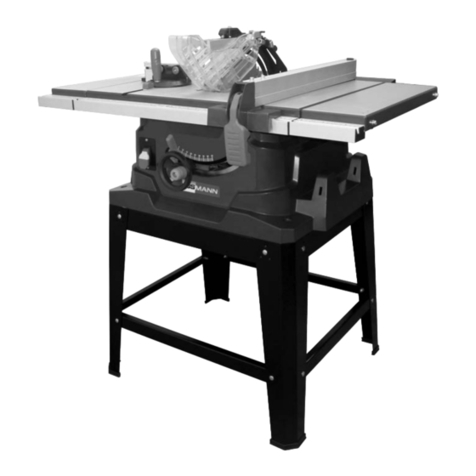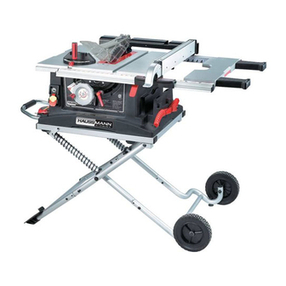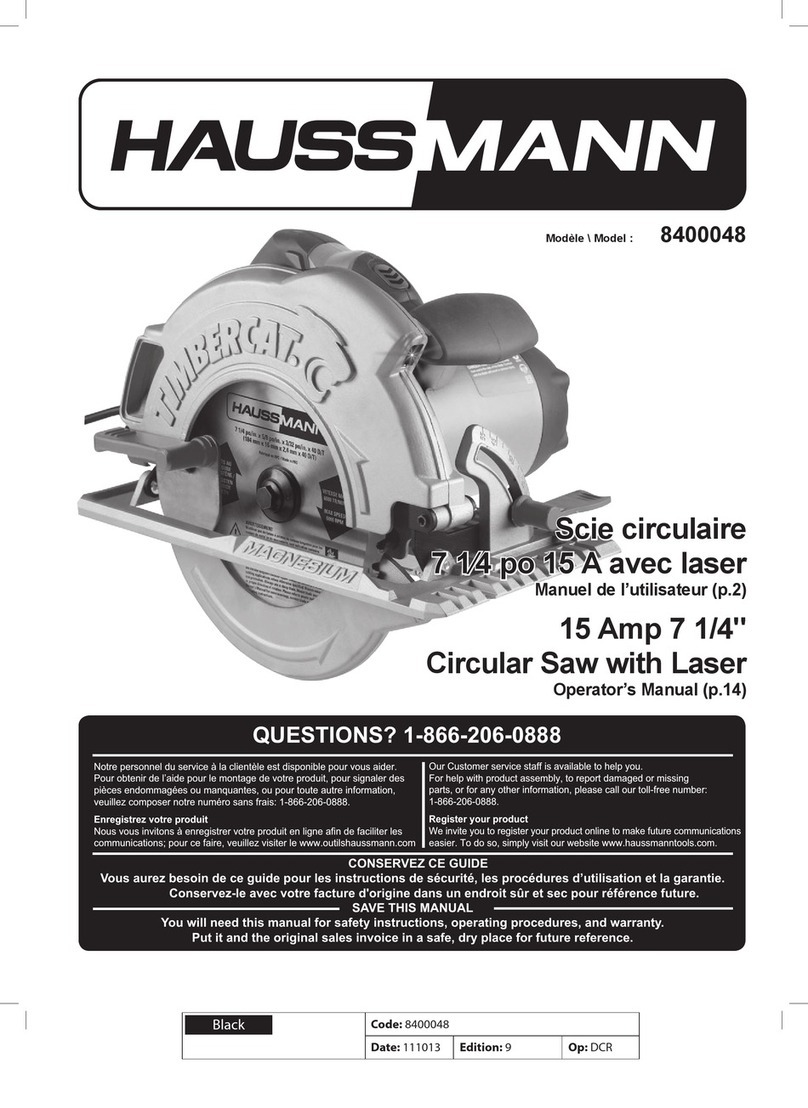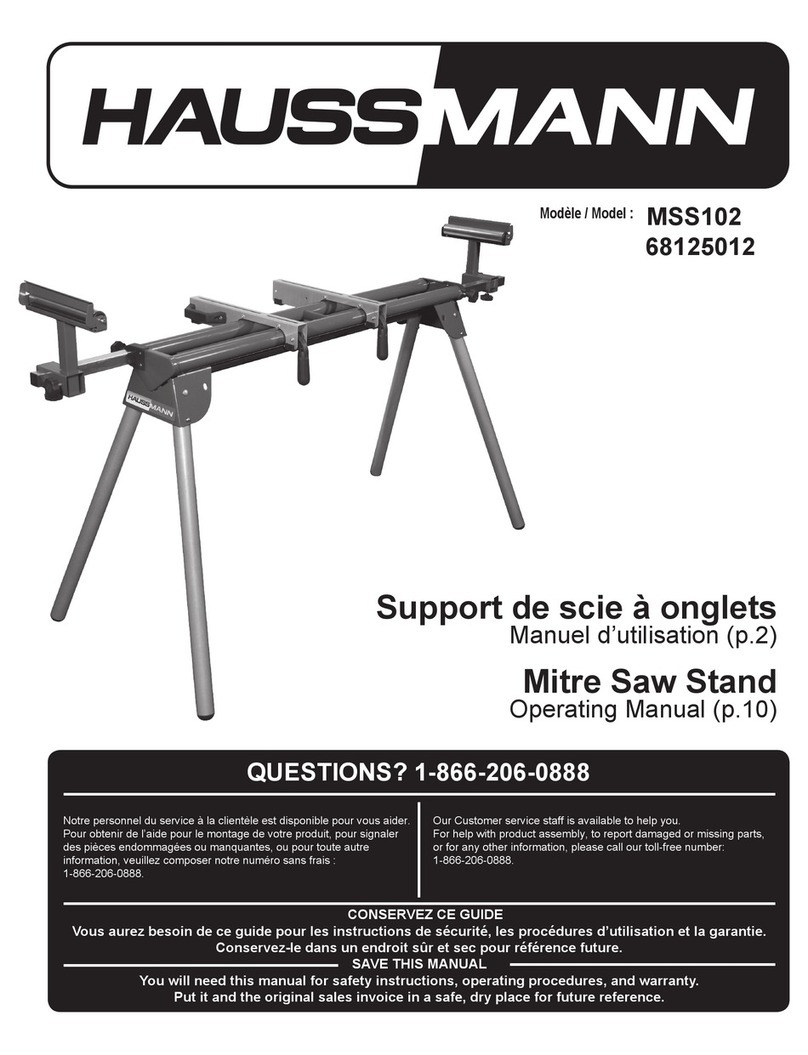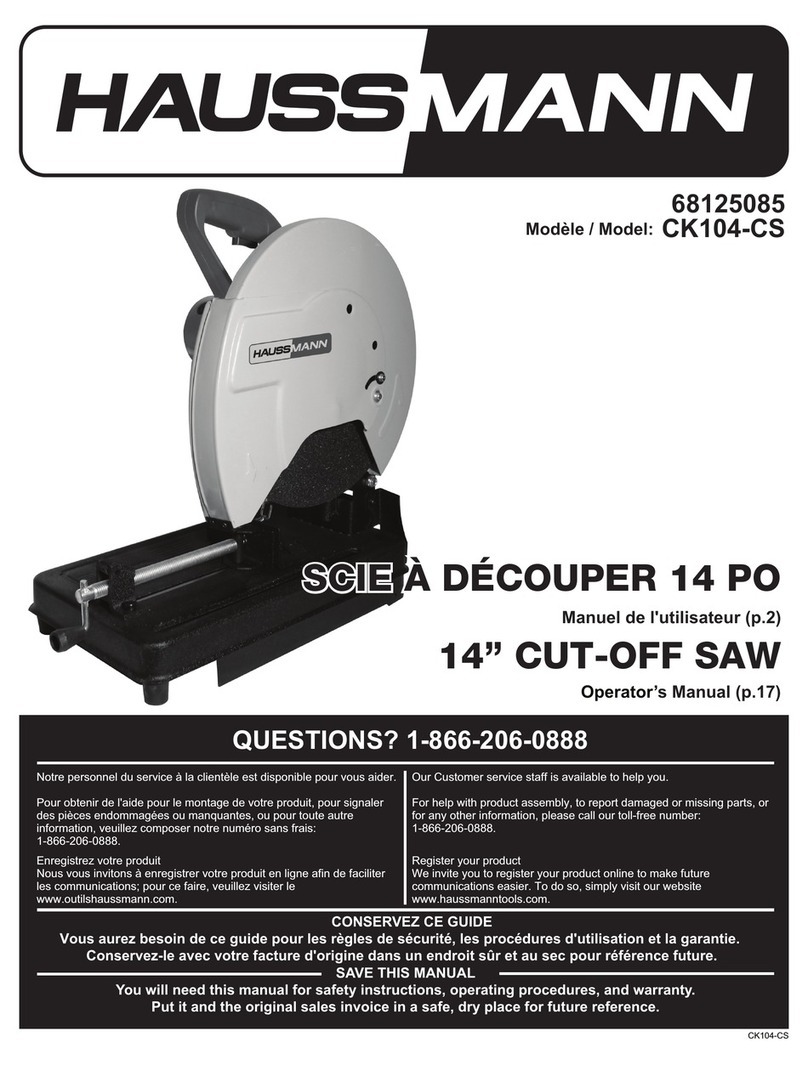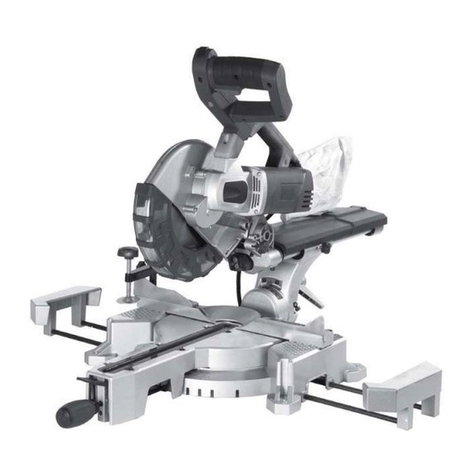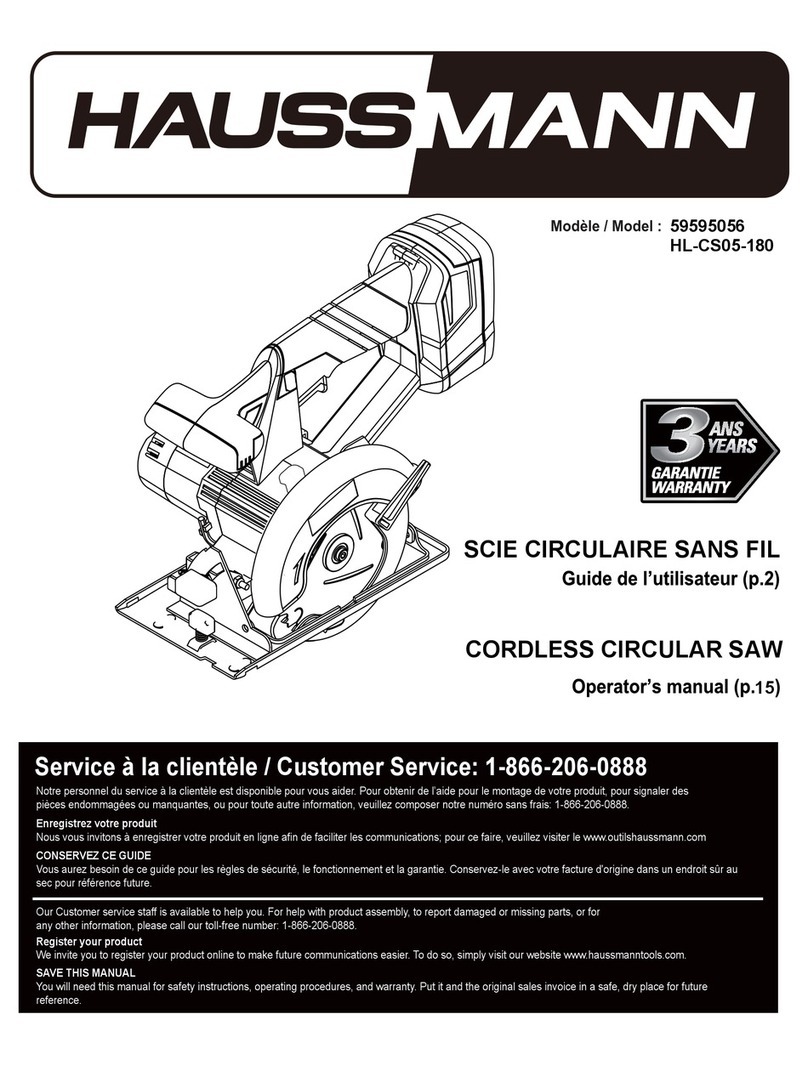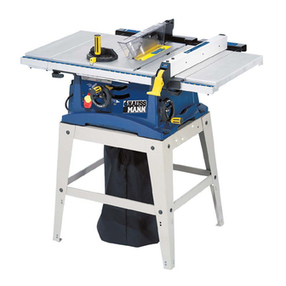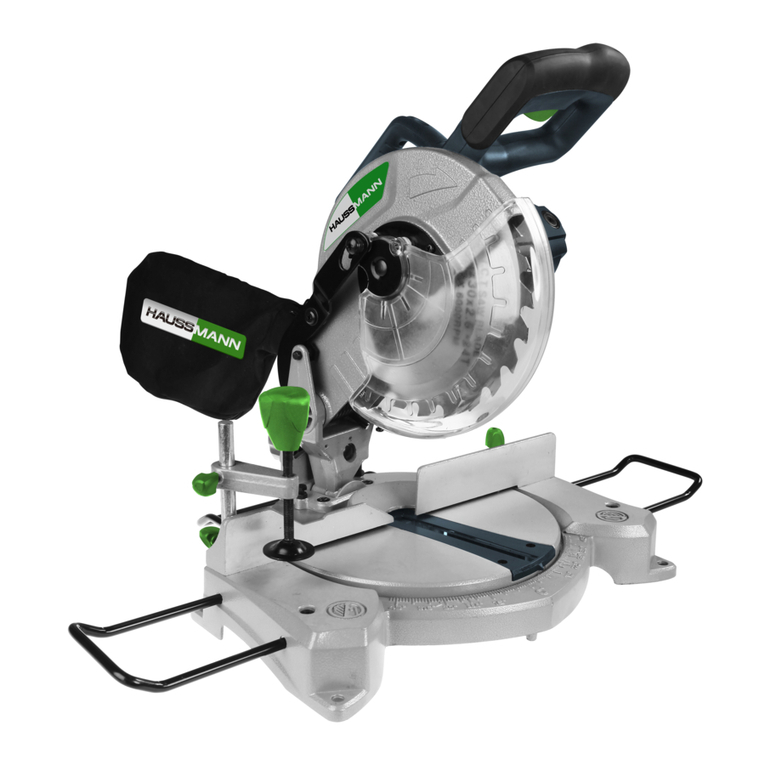
If both hands are holding the saw, they cannot be cut by
the blade. Hold the saw rmly to prevent loss of control. Figures
in this manual illustrate typical hand support of the saw. NEVER
place your hand behind the saw blade since kickback could cause
the saw to jump backwards over your hand.
KICKBACK could cause the saw
to jump backwards.
The guard cannot
protect you from the blade below the workpiece. Do not attempt to
remove material cutoffs when blade is moving.
Do
not operate saw if lower guard does not move freely and close
instantly. Never clamp or tie the lower guard into the open position.
If saw is accidentally dropped, lower guard may be bent. Raise the
lower guard only with the lower guard lift lever and make sure it
moves freely and does not touch the blade or any other part, in all
angles and depths of cut.
If the guard
and the spring are not operating properly, they must be serviced
before use. Lower guard may operate sluggishly due to damaged
parts, gummy deposits, or a buildup of debris. Periodically remove
the blade, clean the upper, lower guards and the hub area with
kerosene and wipe it dry, or blow it clean with compressed air
Raise
lower guard by its lift lever only. As soon as blade enters the
material, the lower guard must be released. For all other cuts, the
lower guard should operate automatically.
An unprotected,
coasting blade will cause the saw to walk backwards, cutting
whatever is in its path. Be aware of the time it takes for the blade
to stop after switch is released.
It is important to support the work properly to minimize body
exposure, blade binding, or loss of control.
Contact with a “live” wire will also make exposed metal
parts of the tool “live” and shock the operator.
This improves accuracy of cut andreduces the risk of blade
binding.
Blades that do not match the mounting
